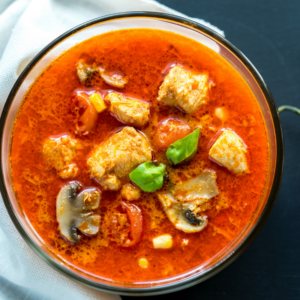There’s a lot more in the way of meat out there than pork, beef, and poultry. Venison, bison, rabbit, goat, and even alligator are all examples of readily available game meats (in most places).
With the paleo way of eating running rampant in the country these days, and with one of the pillars of that lifestyle being the consumption of wild meats, game is easier to come by in stores now than it has been in some time.
Whether you’re a primal eater or not, game meat deserves a starring role on your dinner plate on a regular basis. Wild game meat is, in general, a healthier option than commercially farmed meats for several reasons. Here are a few of them:
Leaner. Wild animals feed on grass and their natural diets, rather than being stuffed with fatty grains. Wild animals are also more active, out there roaming free on the range, which results in very lean meat. Domestic animals have 25-30% body fat compared to the average body fat percentage of wild animals being under 5%.
More protein. Because game meat is less fatty, there’s more protein per ounce, making it a richer source of protein than meat from its domestically raised counterparts. Goat is higher in protein than beef, and yak meat has twice as much protein as chicken breast. Did you know that alligator is a very easily digestible protein?
Iron, zinc, B12. Game meat is higher in B12, zinc and iron than domestic meat is. One of the reasons for this is that wild animals usually live longer than their farm-raised animals, giving them more time to develop high iron levels.
Low Omega-6. Omega-6 fatty acids lead to inflammation in the body, which can cause lots of problems from diabetes and obesity, to arthritis and cancer. Game meat isn’t fed corn and grain like domestic animals are, resulting in meat with less omega-6 fatty acid.
High Omega-3. Those good Omega-3s are found in abundance in wild game. Remember, we need Omega-3s for our bodies to function properly, and they also help to lower inflammation in our systems.
In addition to all of these benefits, game animals are raised in their natural environment and not exposed to hormones and antibiotics like domestic animals are.
If you’re nervous about adding game meats to your diet, try to introduce it slowly, by adding it to meats you’re familiar with.
Shop for game meat at farmers’ markets, specialty meat shops and natural food stores.
Always cook game meat at a lower temperature than you would fattier pork and beef.
—————————————
PS–Speaking of meat, enjoy this recipe for Chicken and Mushrooms with Roasted Red Pepper Sauce:

Chicken and Mushrooms with Roasted Red Pepper Sauce
Ingredients
- 2 tablespoons ghee divided, or use coconut oil
- 2 medium tomatoes peeled, de-seeded and chopped
- 1 small onion chopped
- 2 cloves garlic minced
- 1 medium red bell pepper roasted and chopped
- 1/2 cup low sodium chicken broth or use homemade
- 1 tablespoon chopped flat leaf parsley
- 1/4 cup chopped basil leaves divided
- 1/4 teaspoon dried thyme
- 1/2 teaspoon hot sauce
- 2 teaspoons sea salt divided
- 1 teaspoon freshly ground black pepper divided
- 16 ounces baby portabella mushrooms
- 4 6-oz. boneless skinless chicken breast halves
Instructions
- Melt half of the ghee (or coconut oil) over medium-high heat. Add tomatoes, onion and garlic; cook until soft.
- Add roasted red bell pepper, broth, parsley, 1 tablespoon of the basil, the thyme, hot sauce, 1 teaspoon of the sea salt and 1/4 teaspoon of the black pepper to the mixture; bring mixture to a boil then puree (either with an immersion blender or in batches in a food processor).
- If using a food processor, return mixture to the saucepan; cover and simmer for 5 to 7 minutes. In a large skillet, melt remaining ghee (or coconut oil) over medium-high heat.
- Add mushrooms and cook until tender; remove from the skillet and set aside.
- Add the chicken to the skillet and season with remaining salt and remaining pepper; cook for 3 to 5 minutes per side or until juices run clear; remove skillet from the heat.
- To serve, place cooked mushrooms on a large serving platter and arrange chicken on top; pour red pepper sauce over all and garnish with remaining basil.
Notes
Vinaigrette.
Subscribe to Dinner Answers today to gain access to many more Paleo recipes like this!
0 Responses
My husband is a hunter, so we don’t need to turn to the grocery store for them. However, part of the deers’ diet is the farmers’ GMO corn and soybeans.
A friend gave us a lot of deer meat, but I am afraid to cook it because I don’t know how. The only example I have is how my father in law does if – cut into nuggets, breaded and deep fried (!) – tastes great, but……
What a treat! The best (and easiest) way I like to cook it is as a roast in a crock pot. Make sure you use plenty of spices and liquid. Then just cook it all day. There are lots of recipes online. My favorite has Montreal steak seasoning and gravy. Enjoy!
most our the meat that i buy is kind of like wild meat anyway as it is all farmed outside in all weathers. in fact i see them over the fence at my workplace. one of the advantages of living in rural New Zealand I suppose.
i love the paleo diet but am slowly emptying my pantry and changing the things i buy especially coconut oil rather than olive oil but i still like rice bran oil/avocado oil for some things.